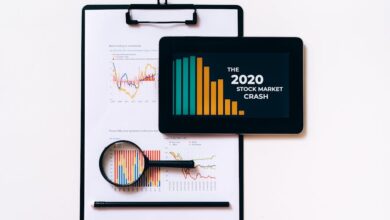Weathering the Economic Storm: Recognizing Recession Signs, Impacts, and Strategies for Survival

As the global economy faces an array of challenges, the specter of a potential recession looms large, prompting both individuals and businesses to reassess their financial strategies. Understanding the early warning signs of an economic downturn is crucial for timely preparedness, while recognizing how recessions impact various sectors can illuminate the vulnerabilities and opportunities that arise during such periods. This article explores the multifaceted nature of recessions, delving into effective investment strategies and the role of government stimulus in cushioning the blow. Additionally, we will examine the shifts in consumer behavior, the ramifications for global trade and supply chains, and the valuable lessons learned from past economic downturns. By equipping ourselves with knowledge and insights, we can better navigate the turbulent waters of recession and emerge more resilient. Join us as we dissect these crucial aspects and provide actionable strategies for weathering economic storms.
- 1. **Identifying the Red Flags: Early Warning Signs of an Economic Recession**
- 2. **Navigating the Storm: Understanding Recession Impacts Across Economic Sectors**
1. **Identifying the Red Flags: Early Warning Signs of an Economic Recession**
Identifying early warning signs of an economic recession is crucial for businesses, investors, and policymakers alike, as it enables proactive measures to mitigate potential impacts. Several key indicators often signal an impending economic downturn.
One of the most prominent signs is a decline in consumer confidence, which can be measured through surveys that assess households' perceptions of the economy and their financial situations. When consumers feel uncertain about their economic future, they tend to reduce spending, leading to decreased demand for goods and services.
Another significant indicator is a slowdown in economic growth, typically reflected in gross domestic product (GDP) figures. A consistent decline in GDP over two consecutive quarters is often a formal definition of a recession. Additionally, falling industrial production and manufacturing output can signal reduced consumer demand, further contributing to economic stagnation.
Rising unemployment rates are also a critical red flag. As companies begin to cut costs in anticipation of lower demand, layoffs often increase, leading to a further decline in consumer spending. Furthermore, if initial jobless claims rise significantly, it can indicate that businesses are struggling, which may precede a larger economic downturn.
Changes in interest rates and lending practices are other warning signs. When central banks raise interest rates to combat inflation, borrowing costs increase, which can lead to reduced consumer and business spending. Conversely, if banks become more cautious in their lending practices, it could restrict access to credit and stifle economic growth.
Lastly, fluctuations in stock market performance can serve as a leading indicator of an economic recession. A sustained decline in stock prices may reflect investor pessimism about future corporate earnings and economic conditions.
By closely monitoring these red flags, stakeholders can better prepare for the challenges posed by a recession and take proactive steps to safeguard their interests.
Economic recessions are characterized by a significant decline in economic activity across various sectors, leading to widespread consequences. Early warning signs often include a decrease in consumer spending, rising unemployment rates, and declining industrial production. These indicators can signal troubles ahead, prompting businesses and investors to reassess their strategies.
The impact of recessions is felt differently across various sectors. For example, consumer discretionary sectors, such as retail and hospitality, tend to suffer the most as households tighten their budgets. Conversely, essential services like healthcare and utilities may remain stable or even see increased demand. The construction and real estate industries often experience a slowdown, while technology sectors that focus on cost-saving innovations may thrive.
Investing during a recession requires a strategic approach. Investors often pivot towards defensive stocks, which are less sensitive to economic cycles, or consider bonds that provide more stability. Diversification becomes crucial, along with a focus on companies with strong balance sheets that can weather economic downturns.
Government stimulus plays a vital role in mitigating the effects of a recession. Through measures like fiscal stimulus packages, tax cuts, and monetary policy adjustments, governments aim to boost consumer confidence and encourage spending. Such interventions can help stabilize the economy, though the effectiveness depends on the timing and scale of the response.
Consumer behavior typically shifts during economic downturns, with increased savings rates and a focus on essentials. This shift can lead to reduced spending on non-essential goods and services, impacting businesses across the board. Companies often respond by adjusting their marketing strategies and product offerings to align with changing consumer priorities.
Recessions also have significant repercussions on global trade and supply chains. Economic slowdowns can lead to reduced demand for imports and exports, prompting businesses to reassess their supply chain strategies. Companies may seek to localize production or diversify suppliers to mitigate risks associated with global disruptions.
Lessons learned from past recessions, such as the Great Recession of 2008, underscore the importance of financial preparedness and strategic planning. Companies that prioritize cash flow management, maintain strong relationships with suppliers, and invest in technology often emerge stronger from downturns.
To prepare for and survive a recession, businesses can adopt several proactive strategies. This includes conducting regular financial health assessments, streamlining operations, and investing in workforce training to enhance productivity. Emphasizing customer relationships and adapting offerings to meet evolving needs can also help businesses maintain resilience during challenging economic times.
2. **Navigating the Storm: Understanding Recession Impacts Across Economic Sectors**
Recessions affect various sectors of the economy in distinct ways, often amplifying existing vulnerabilities while also creating new challenges. Understanding these impacts is crucial for policymakers, businesses, and investors alike.
The manufacturing sector typically experiences a sharp decline during a recession. As consumer confidence wanes, demand for durable goods—such as automobiles and appliances—drops significantly. Manufacturers may respond by reducing production, laying off workers, or delaying investments. These actions can lead to a cascading effect, impacting suppliers and related industries.
The retail sector is also heavily influenced by economic downturns. Consumers tend to cut back on discretionary spending, prioritizing essential items over luxury goods. Retailers may face increased competition for a shrinking customer base, leading to markdowns and reduced profit margins. E-commerce has provided some resilience, but traditional brick-and-mortar stores often struggle to adapt quickly to changing consumer behaviors.
In contrast, essential services such as healthcare and utilities may experience steadier demand. Healthcare providers, however, face challenges related to funding and reimbursement rates during recessions, which can strain resources. Conversely, industries such as fast food and discount retailers often see an uptick in business as consumers seek more affordable options.
The financial sector typically grapples with increased defaults and delinquencies, which can lead to tighter lending standards. This credit crunch can further exacerbate economic challenges, as businesses and consumers find it harder to secure financing for investments and expenditures.
Real estate markets can also be significantly impacted, with property values often declining as buyers become more cautious. Commercial real estate, in particular, may see rising vacancy rates as businesses downsize or close altogether.
Overall, a recession creates a ripple effect across sectors, highlighting the interconnectedness of the economy. Understanding these dynamics is essential for crafting effective strategies to mitigate risks and capitalize on opportunities during challenging times.
In conclusion, understanding the multifaceted nature of economic recessions is crucial for individuals, businesses, and policymakers alike. By recognizing the early warning signs, such as declining consumer confidence and rising unemployment rates, stakeholders can take proactive measures to mitigate potential impacts. The varied effects on different sectors underscore the importance of tailored strategies; some industries may face significant challenges while others may present unique opportunities for growth.
Investing during a recession requires a keen eye for resilience and adaptability, with strategies such as diversifying portfolios and focusing on defensive stocks proving beneficial. Government stimulus plays a pivotal role in cushioning the blow of economic downturns, helping to stabilize markets and support consumer spending. Likewise, shifting consumer behavior during these times, characterized by increased savings and cautious spending, necessitates that businesses adjust their approaches to meet changing demands.
Furthermore, the global nature of today’s economy means that recessions ripple through international trade and supply chains, affecting economies worldwide. Learning from past recessions offers valuable insights into resilience and recovery strategies, helping us navigate future challenges more effectively. As businesses prepare for potential downturns, adopting flexible operational strategies, maintaining robust financial reserves, and fostering innovation will be essential for not just surviving but thriving in uncertain times.
By equipping ourselves with knowledge and strategic foresight, we can better navigate the complexities of recessions and emerge stronger on the other side.





